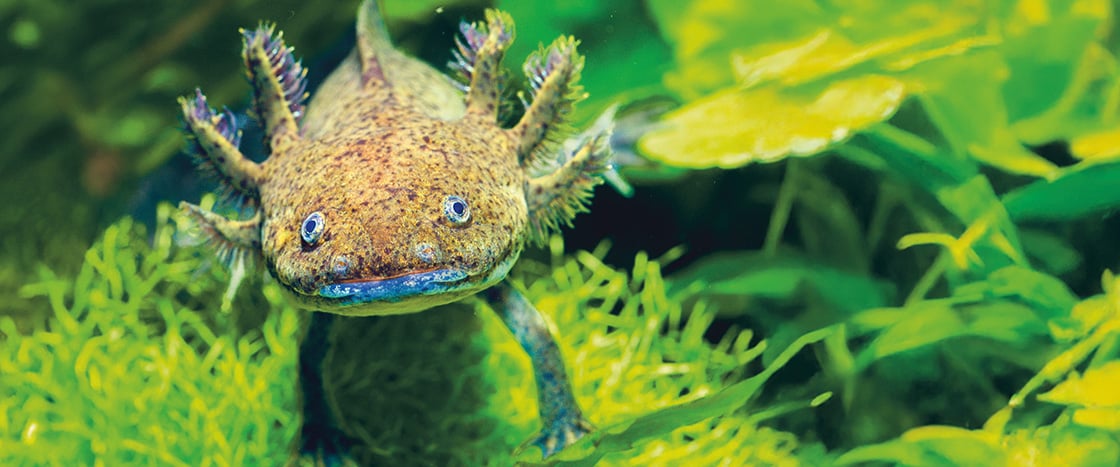Mojang Studios (Minecraft); Epic Games (Fortnite)
Who doesn’t love an axolotl (AK-suh-lah-tl)? Their sweet faces and frilly gills have made these adorable animals popular pets and social media stars. And lately, they seem to be everywhere.
On YouTube, axolotl videos have millions of views. In the video game Minecraft, cartoon axolotls battle underwater enemies. At Build-A-Bear stores, kids can dress plush axolotl toys in sparkling outfits.
But the axolotl is more than just the latest animal superstar. For centuries, the amphibian has been an important part of Mexican culture. The ancient Aztec—an Indigenous people of central Mexico—believed the creatures were magical. It’s easy to understand why. Axolotls can regrow many parts of their bodies, including pieces of their hearts.
“Axolotls are an icon for Mexican people,” says Diana Laura Vázquez Mendoza, a scientist with the National Autonomous University of Mexico (UNAM).
Stroll through Mexico City today, and you’ll see colorful axolotls painted on buildings. At parades, giant handmade axolotls are driven through city streets, cheered on by fans. When Mexico City was choosing an official emoji, the axolotl was the clear choice.
Who doesn’t love an axolotl (AK-suh-lah-tl)? They have sweet faces and frilly gills. It’s no surprise these adorable animals are popular pets and social media stars. And lately, they seem to be everywhere.
Axolotl videos have millions of views on YouTube. Cartoon axolotls fight enemies in the video game Minecraft. Kids can dress axolotl toys in fancy outfits at Build-A-Bear stores.
But the axolotl is more than just the latest animal superstar. For centuries, this amphibian has been an important part of Mexican culture. The ancient Aztec are an Indigenous people of central Mexico. They believed axolotls were magical. It’s easy to understand why. Axolotls can regrow many parts of their bodies, including pieces of their hearts.
“Axolotls are an icon for Mexican people,” says Diana Laura Vázquez Mendoza. Mendoza is a scientist with the National Autonomous University of Mexico.
Stroll through Mexico City today. You’ll see colorful axolotls painted on buildings. Giant handmade axolotls are featured in parades and cheered on by fans. When Mexico City was choosing an official emoji? The axolotl was the clear choice.


